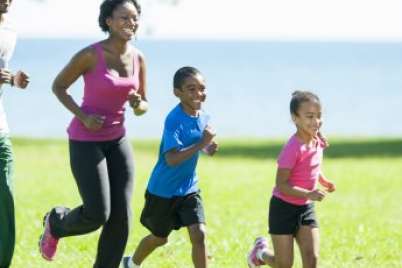
How to get started using active transportation
The evidence for why we should actively transport ourselves in the city is mounting, but there are some technicalities to work out. You want to get yourself around under your own steam, but where do you start? It can seem a bit daunting to change habits and possibly routes. Thankfully, we live in an era with lots of tools at our fingertips that can help us out. Here are five tips to get you walking or rolling in your day-to-day.
1. Google Maps is your friend
In most major cities, Google Maps has the option to give you directions for what is likely to be your best bet as a walking or biking route to your destination. Once you get to know the more pleasant bits of infrastructure in your neighbourhood — like a nice park to walk through or a protected cycle track — you may modify your routes in subtle ways that Google just cannot (yet) do, but this tool is an excellent starting point for route-finding.
Download the free Google Maps app for your smartphone if you don’t already have it. Select your new mode (walk or bike) and the app will suggest your best route. Also, take the chance to compare drive time vs. active transportation: you might be pleasantly surprised.
For example:
Our local French bakery:
About 7 mins to drive (plus finding parking), 18 mins to walk, or 10 minutes to ride (and I know they have a bike rack right out front of their business).
If I bike, I will get at least 20 minutes of exercise round-trip instead of 14 sedentary minutes in my car, with added stress and expense of finding parking.
Our elementary school:
About 6 mins to drive (but usually longer due to a congested left turn lane), 31 mins to walk, or 11-15 minutes to ride (depending on the route I take).
If I bike, I get 20-30 minutes of exercise (and it’s uphill, both ways!). Doing this twice a day gives me up to an hour of exercise. Done, just like that!
2. Practice run
Do a test run for timing before you are racing against the clock, trying to make it to school drop-off or work on time. Just like driving, inclement weather will slow you down a bit. Google Maps will suggest a few alternate routes; find out which is your favourite by practicing, or perhaps blend a few routes together.
3. Set yourself a goal
Many people set a weather, distance, or quantity goal. For example, when my husband started bike commuting in Vancouver, he said he would take transit when it was raining (not drizzling—real rain). He rarely took transit (big secret: it really doesn’t rain in Raincouver).
Lots of die-hard cyclists where we now live, in Calgary, start biking only in the nicer months but end up developing an addictive habit and continue on through the short winter months. Surprisingly, most people agree that it is easier to bike in dry, cold winter than wet, freezing cold rain.
When I started doing preschool drops off with my three-year-old and two-week-old in tow, I vowed that I would always self-propel myself at least one way (drop off or pick-up); I’ve graduated to exclusively walking or biking with my now Grade One-er and preschooler.
Another strategy is to pick a day: perhaps you are busy with meetings most days of the week and are worried about being sweaty, etc. so set yourself the goal of riding to work every Friday when you have a more relaxed schedule (and wardrobe).
Or, many people pick a radius and will reach for their bike, for example, instead of their keys, to run errands, etc. within a five-kilometre radius.
4. Give yourself time for the habit to take hold
Studies say that, on average, it takes 21 days to form a new habit. Take it easy on yourself and keep trying! Be inspired by the progress that you are making, personally, which is also leaving a huge impression on your kid(s). You will have some setbacks that may be frustrating, but just let go and give yourself this time to grow into a new routine — you’ll be surprised at the positive changes that you can make for you and your family!
5. Be a squeaky wheel
Download your city’s 311 or “see-click-fix” app to report problems along your route. Email or tweet your concerns to your city councillor. It is important to let your city know where there are issues with respect to your safety. Segregated infrastructure (like pathways, cycle tracks, raised crossings, etc.) are the best way to keep you and your family safe. They also seem to be the best way to encourage more people to actively transport themselves, including children!
Check out the Swedish movement of Vision Zero to help educate yourself in making a paradigm shift. Its perspective is that we’ve done as much as humanly possible to make cars, etc. “safe” but we can never completely remove user (i.e., human) error; thus, the onus is now on traffic engineers – the “professionals” – to implement designs that are safest for all users. Helping to inform these professionals of issues in your neighbourhood will help them to make changes that will only make your route to school, for example, safe enough for your child to eventually be able to do it independently.
So, get out there! Actively transporting yourself for your daily commute will create a lifetime of good habits, while benefiting you and others around you financially, environmentally, and with respect to health. Bonus, your kid will likely grow up to be less dependent on you and your car-driving skills, too!





